July 23rd, 2014 §
Monday night, before the rain had even stopped, I was out in the garden harvesting tomatoes. I knew that with so much rain, so quickly, any tomato that was even remotely near ripe would be split by morning if I didn’t get it off the vine. The year’s first Beefmaster and Brandwine were ripe, and I didn’t want to lose these massive and beautiful fruits, ironically, to too much moisture in a drought.
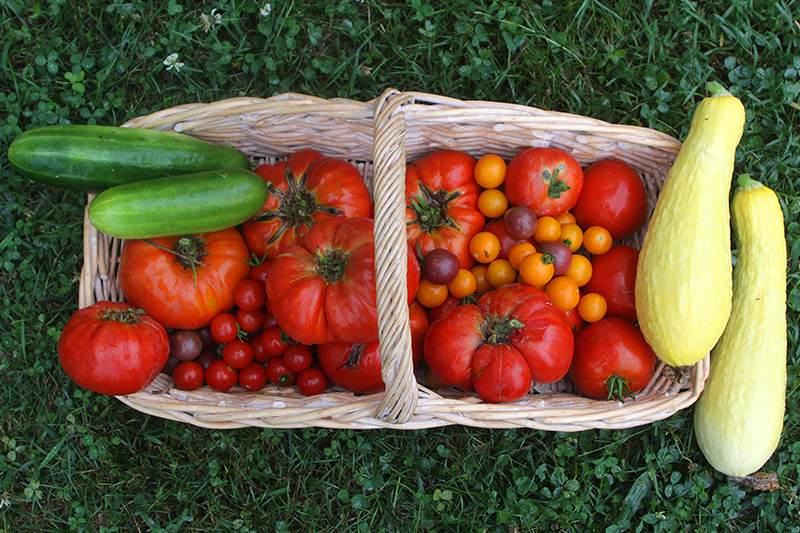
I picked all the tomatoes I could, with a few squash and cukes for good measure. It baffles me that the squash are still standing, but several readers have written that they’ve seen the same pattern in their gardens. Lots of Japanese beetles, not many squash bugs. Amazing. If this is an effect of the polar vortex, I’ll take one every winter!
As calculated by my kountry rain gauge, I got just shy of two inches of rain from the storm. Pretty amazing for about an hour’s worth of rain.
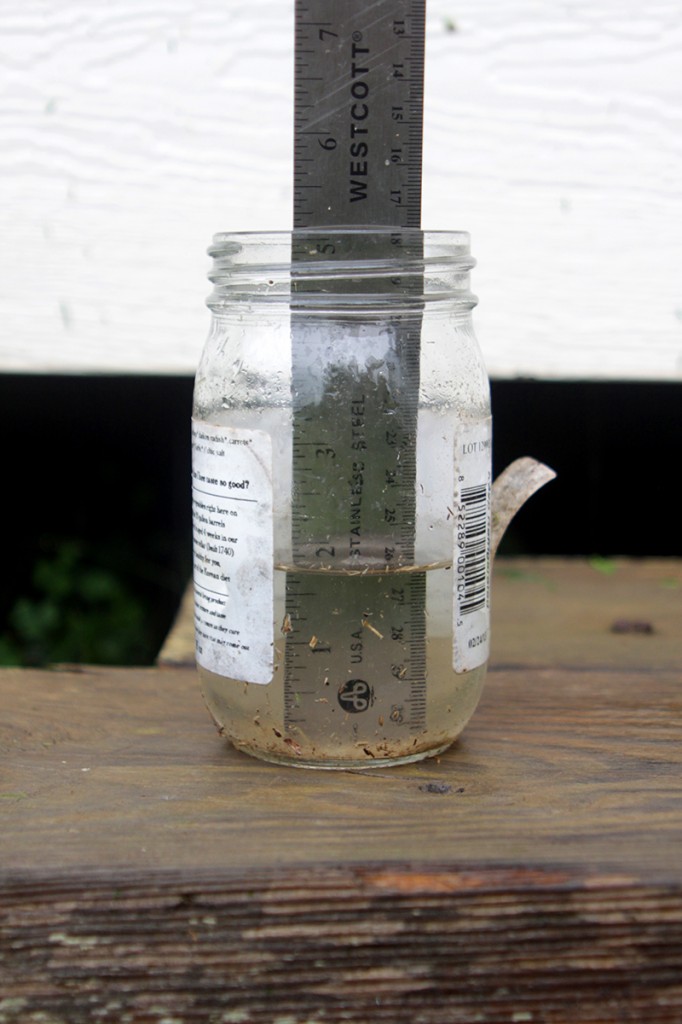
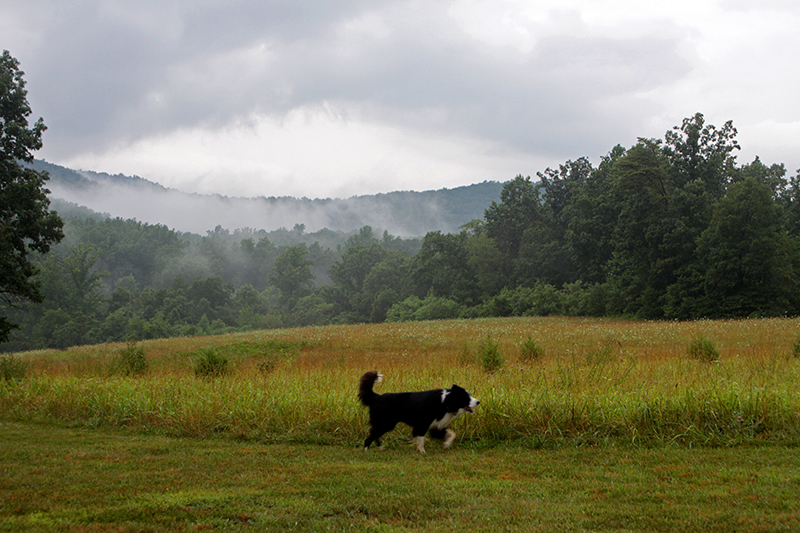
July 22nd, 2014 §
I had just finished an hour of weed wacking in about 99% humidity—a good way to get toned and lose weight!—and was messing around with the chickens. I heard a strange noise approaching from the south. It sounded like the drone of machinery, and as a big truck had just gone by I figured that was what I was hearing. But then the noise grew louder, rolling in waves up the road, across the bridge, and finally over the cedars that mark my property line. By then it was upon me, and within half a second I was drenched with a sudden downpour.
The chickens were out, and I sprang into action trying to call them all into the coop. Half responded, and the other half, along with the two young pullets, huddled outside or tried to jam themselves through the netting to get under the coop. It was chaos, and a scene I would have happily run away from. But I knew that if all the birds got into the coop together there was a good chance that the bigger birds would attack the two pullets, and getting soaked to my underwear seemed like a lesser evil than returning after the rain to patch up bloody birds.
So through the driving rain I grabbed at tail feathers, the water sheeting off the roof of the coop and straight down my pants, into my boots. Ungracefully but efficiently I got everyone caught and tossed through the pop-door of the coop, and then closed it up. Then I ran around to the human door to sort the two young pullets out from the flock and lock them up in their dog crate inside the larger room.
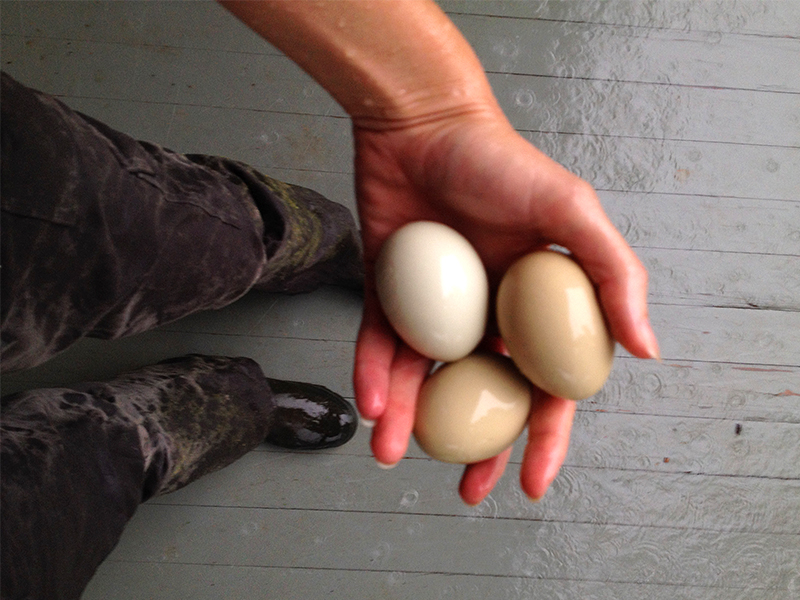
I grabbed the day’s eggs, and my dog and I ran splashing though the instant puddles to the house. In just these few minutes Tuck had already gotten so wet that he couldn’t come inside, so I left him out to meet his fate while I stripped off my streaming, grass-caked clothes right in the foyer.
And then I realized that all the windows were open upstairs. So commenced a naked, slippery dash for towels to mop up the water that was everywhere inside. Some people maybe would have run to close their windows before securing their livestock, but the storm came up so fast that I prioritized on instinct, and the house lost. I just can’t be in two places at once, holding down this while that springs up over there.
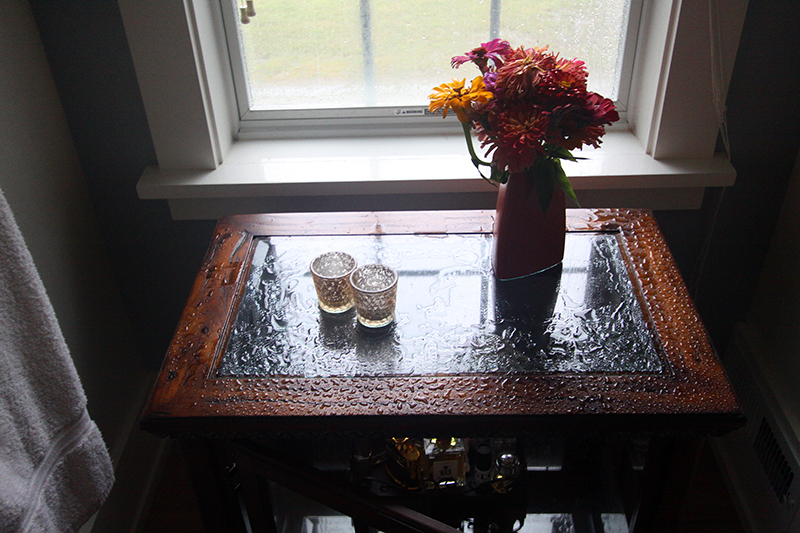
Amazingly, it continued to rain as I regrouped in a hot bath, read through a couple New Yorker articles and drank half an Indian Brown Ale. When I came out of the bath I heard a sound I’d been missing for at least a month, the low mechanical hum of the sump pump in the crawlspace kicking on. I’d begun to think my pump was malfunctioning, I hadn’t heard it in so long. But now it was back with its entirely reassuring noise, and so was rain the likes of which I haven’t had here in many weeks.
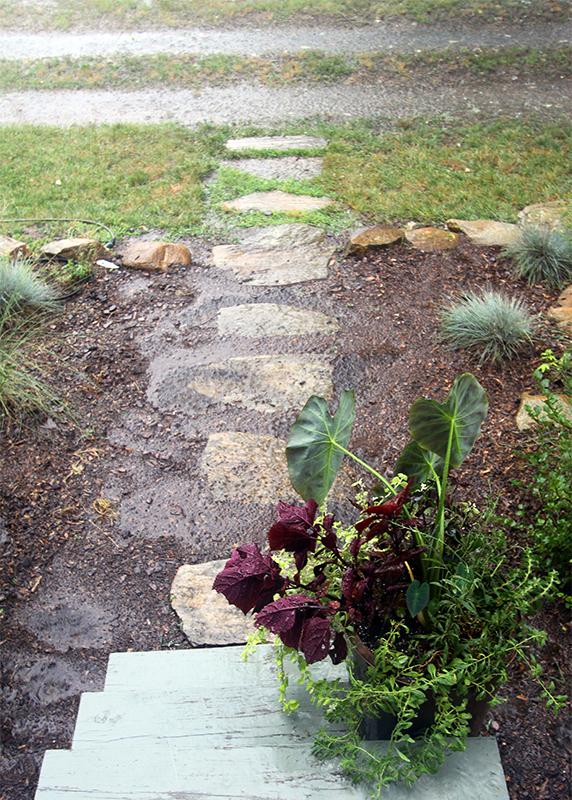
Big deal, you think. It rained. But this rain was needed. In fact, I was about to publish a post about how everything is browned out and we’re running a rain deficit for these last two months. Just last night I was e-mailing with my dad, both of us bemoaning the water stress we were seeing in our trees. The grass in the lawn is about totally dead, and last week the drought got so bad that I ran my well way down applying emergency water to the completely wilted gardens—something I only do in dire straights. Whenever I run the water down so far it kicks up tons of red clay and silt, which clogs my water filter and reduces water pressure in the house to a trickle until I remember that this happens and replace the filter. At $30 a pop.
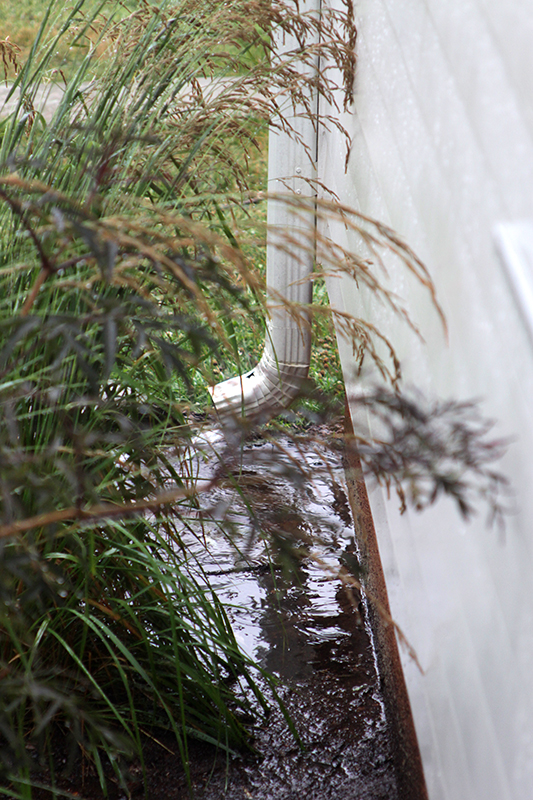
It’s about an hour after it begun and still raining. This pop-up storm mushroomed right over my house and seems to have stalled, thank goodness. The water is coming so fast and furious that it’s ponded everywhere. The compost is floating off the garden, my driveway is running down the road, and I can sense the relief of every growing thing, myself included, as its washed clean, cells plumped and replenished.
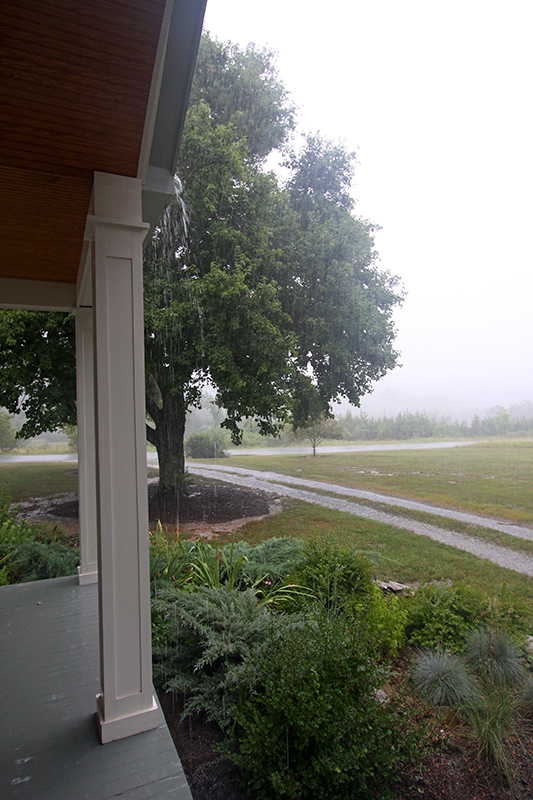
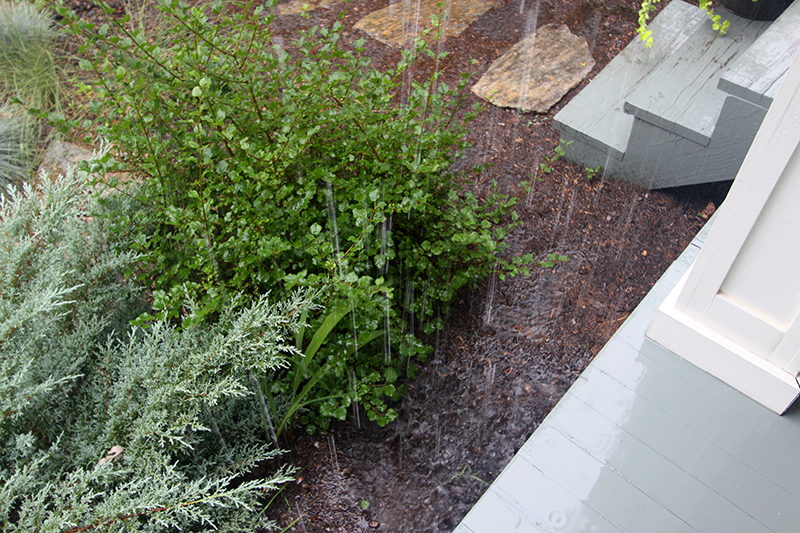
I never thought much about water until I had a farm. In fact, I hated rainy days. But now I know that water is everything and I hope for it, year-round. Tonight I, and every living thing around me, got lucky. Even if we also got soaked.
April 30th, 2014 §
It’s rained for three days and nights, downpours and thunderstorms, and it feels as though this little pocket of central Virginia has become Seattle. The mists lift and drop, playing peek-a-boo with the mountains, and all the new spring greenery is positively glowing in the excess moisture.
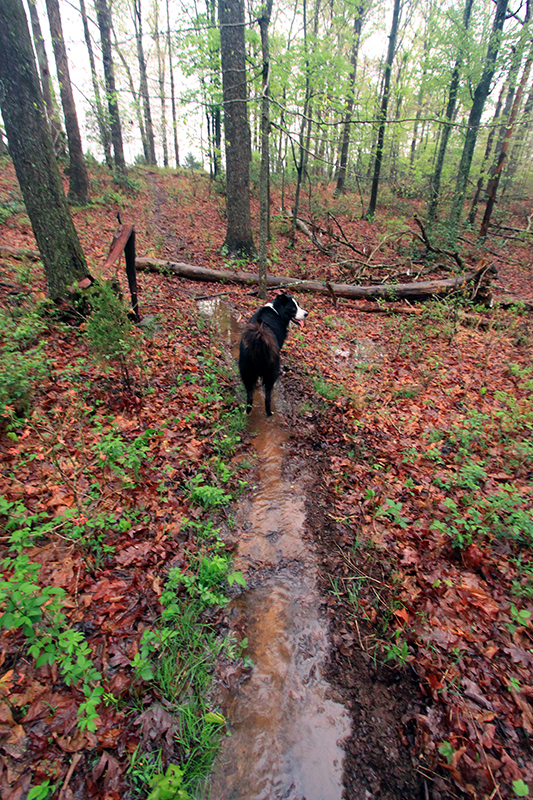
I took a short walk through the woods behind the house this evening, and discovered that Tucker’s trail has become, much to his delight, a creek. My Labrador in sheepdog’s clothing is thrilled that the stream has somehow migrated up the hill to within his reach. He zooms along it, mud flying everywhere. It’s so fun to watch his joy in the water that I can’t even be mad at how filthy he’s getting.
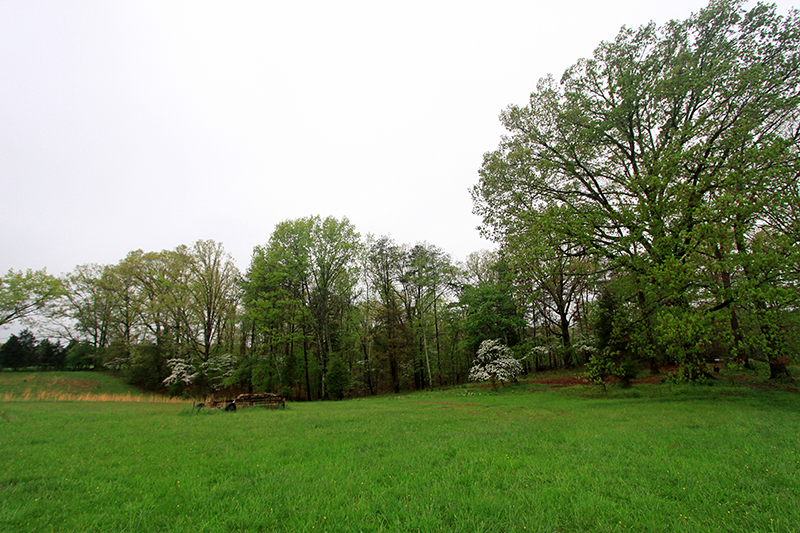
The woods are laced with our native dogwood, state tree of Virginia, and they look spectacular this year. It’s next to impossible to get a good shot of them in the woods, but in person they are stunning—ethereal white blossoms threaded through the entire forest. And look at that grass—technicolor! Methinks I will have the season’s first date with the mower this weekend, if the ground dries out enough to get on it with a big machine.
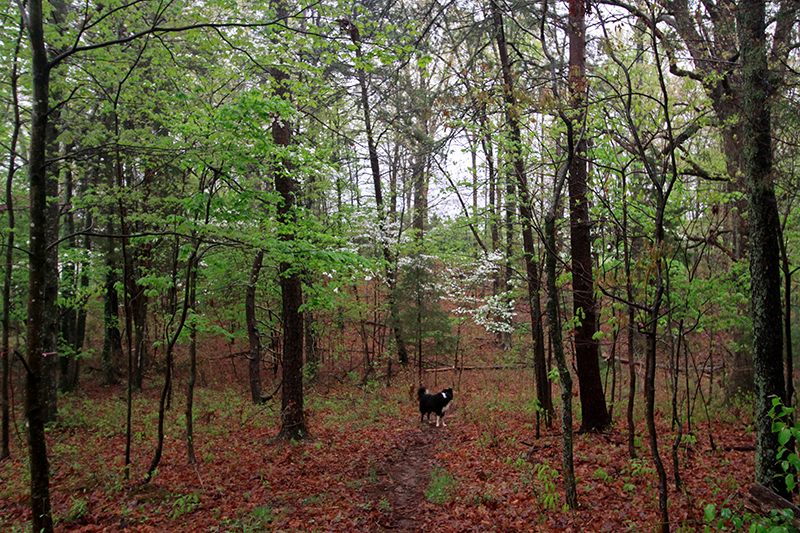
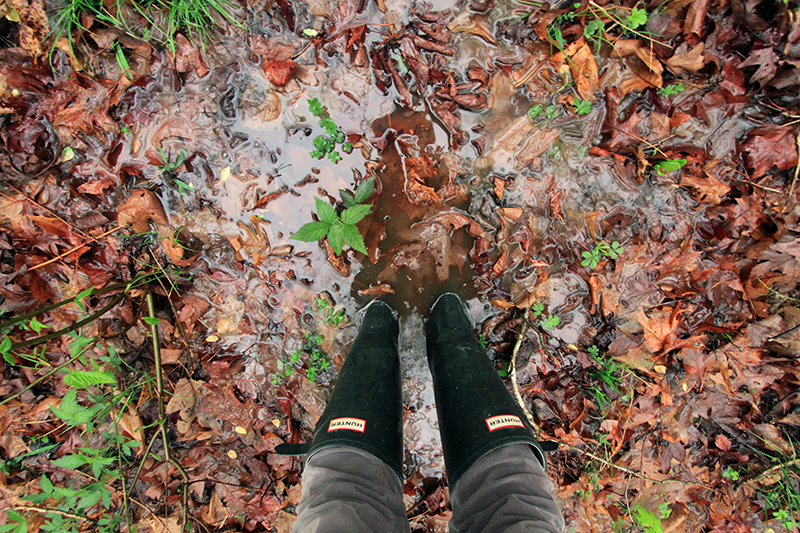
The middle of the woods, where it’s usually just dry forest duff, is now full of little ponds—this one deep enough to swallow my feet!
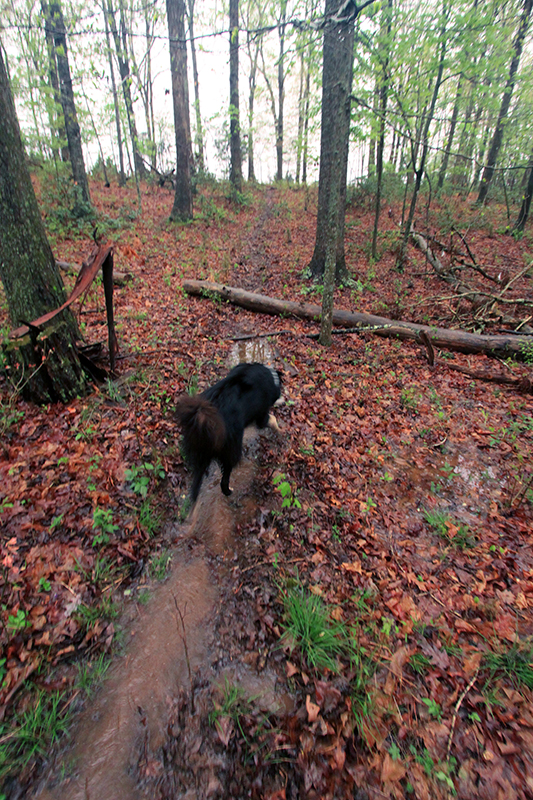
I can’t understand why the water collects as it does here, instead of continuing to run down the hill to the creek. A mystery I’ll never solve.
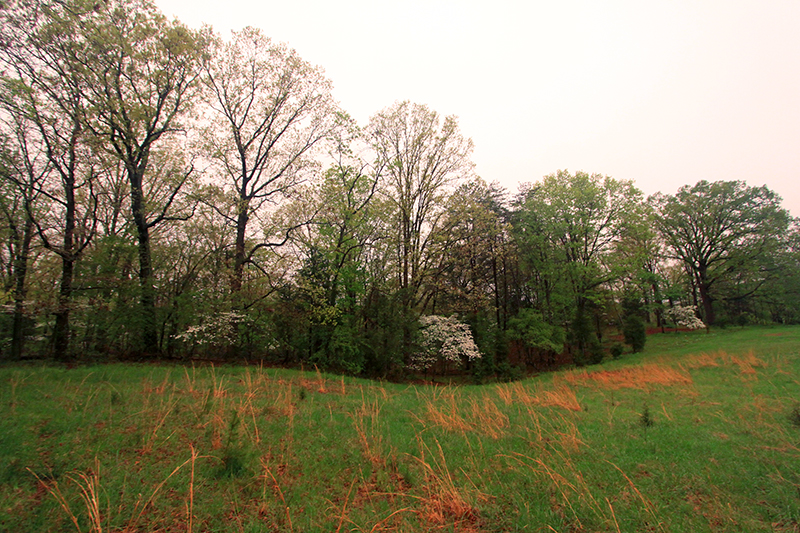
More dogwoods at the wood line, with the big oaks just leafing out above them. I love the gentle curves of this piece of ground. They remind me that I am lucky enough to live in the foothills of the Blue Ridge mountains.
July 6th, 2013 §
We’ve had an unusual, for here, weather pattern during the last few weeks. It’s been raining almost every day, and the air is humid soup. All growing things look great, lush and happy to have all this moisture during a time when we are usually headed into summer drought. I haven’t had to water the garden once in at least a month, and most everything looks very good.
This year I am experimenting with letting some things go to seed. Chard, with its yellow feathery seedheads below, is a biennial. I planted these last year, overwintered them in pots, and now they’re in the garden working on setting seed. It’s a sacrifice to devote square footage to plants that are going to seed, but I am curious to see if I can begin to be less dependent on store-bought seed. I hope that certain things, most especially greens and lettuces, will start self-sowing in the garden, which means less for me to buy, plan and plant each year. And, once plants take control of their own growth cycles, instead of relying on a fallible gardener to tell them when to grow, they usually are much happier and healthier.
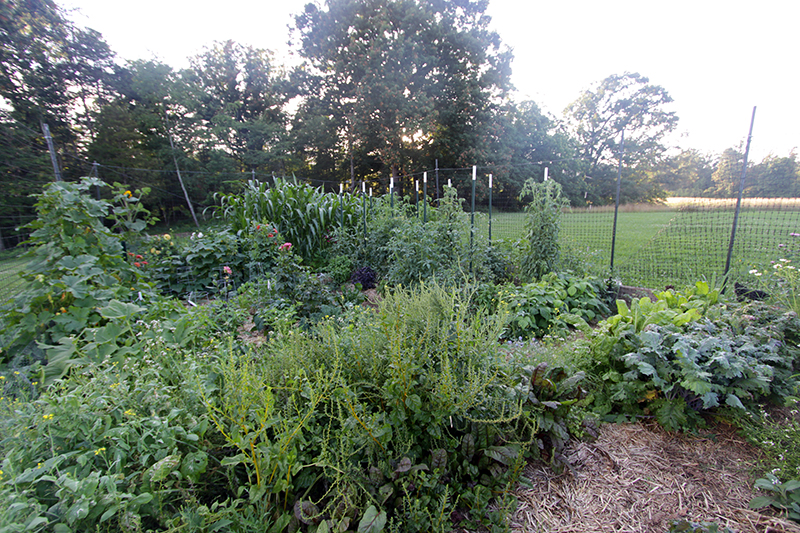
No Fourth of July ripe to tomatoes for me, but the plants are full of green fruit.
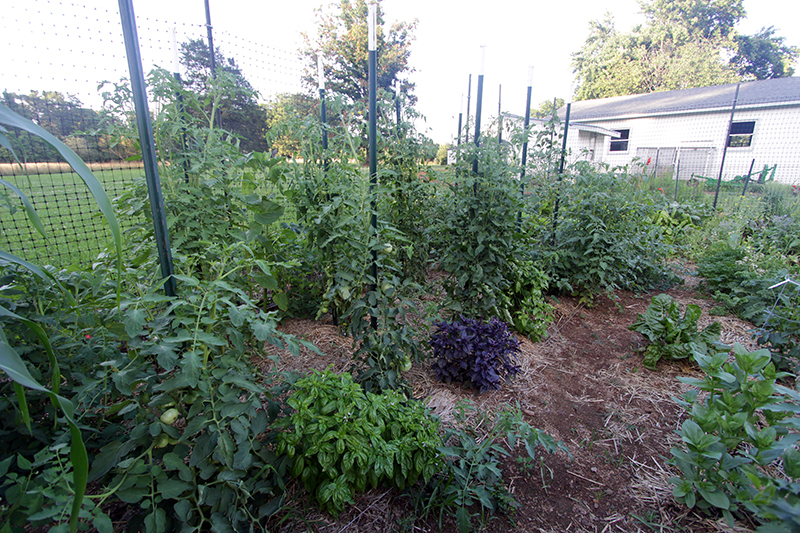
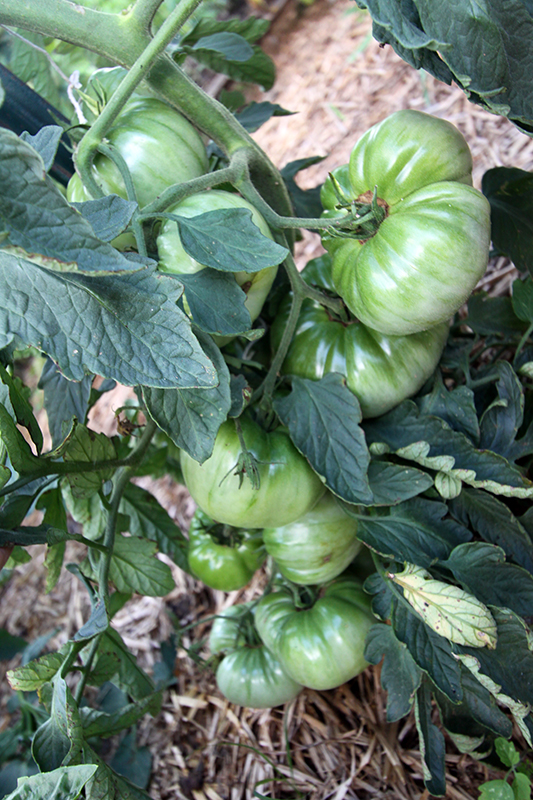
The Sun Sugar cherry tomatoes are just starting to ripen.
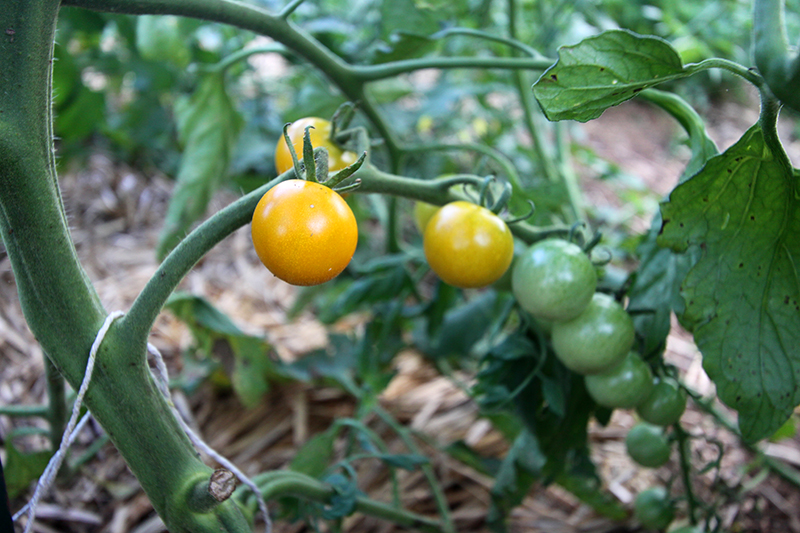
The only downside to all the rain is that it creates good conditions for diseases such a blight and fungus. You can see the beginnings of some blight at the base of this tomato in the yellowing, withered leaves with dark necrotic spots. Nothing to do but remove the affected leaves from the garden to help slow the spread. Some people use chemical sprays to control disease, but they’re an absolute last resort for me and I haven’t used them yet in this garden. Compared with some of my gardening friends, whose tomato plants are already halfway yellow, I am doing okay. I think my planting and mulching practices are paying off.
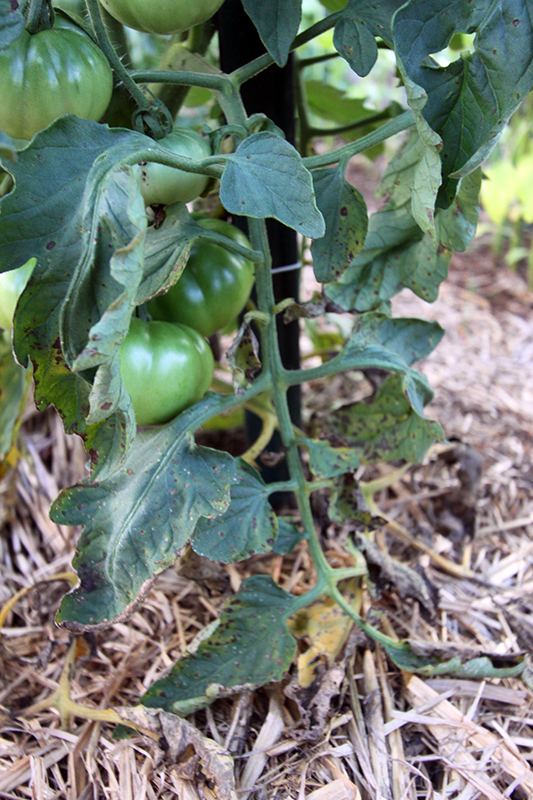
I ripped out the pea vines, which were done for the year, and planted some rattlesnake beans in their place to grow up the trellis. I have never grown these particular beans, but I hear they are pretty great. The big green plant to the right is a volunteer shiso, a wonderfully fragranced Asian culinary herb. I have no idea where the shiso came from—perhaps a neighbor—but it pops up all over my property. When I finally recognized what it was, I let it grow out everywhere as an ornamental.

I think it’s a very beautiful plant that seems to glow from within with a spiritual energy, similar to borage. It’s used in Japanese cuisine for all sorts of things. For example, the red shiso is used to make umeboshi, or pickled plums.
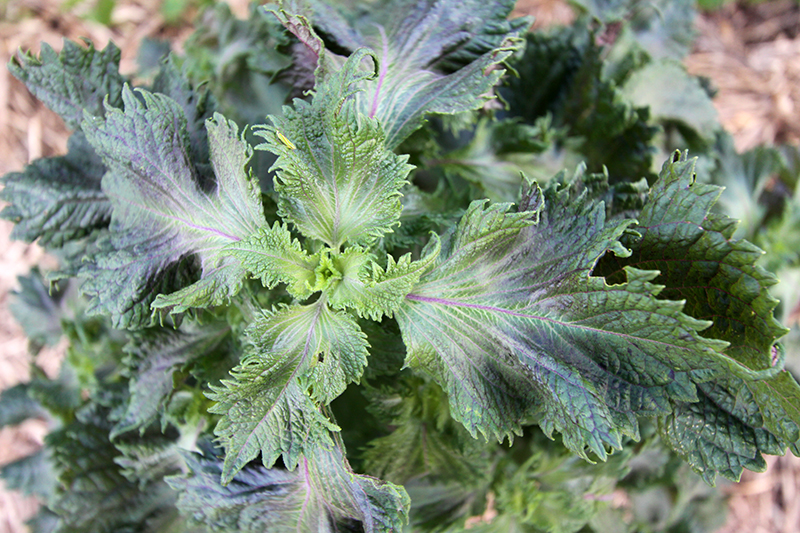
The volunteer vine that I thought was a squash turned out to be a pumpkin! Whoops! I had to cut this pumpkin off before it took down my fence. This plant may not be long for the world anyway as it appears the squash bugs have now discovered it.
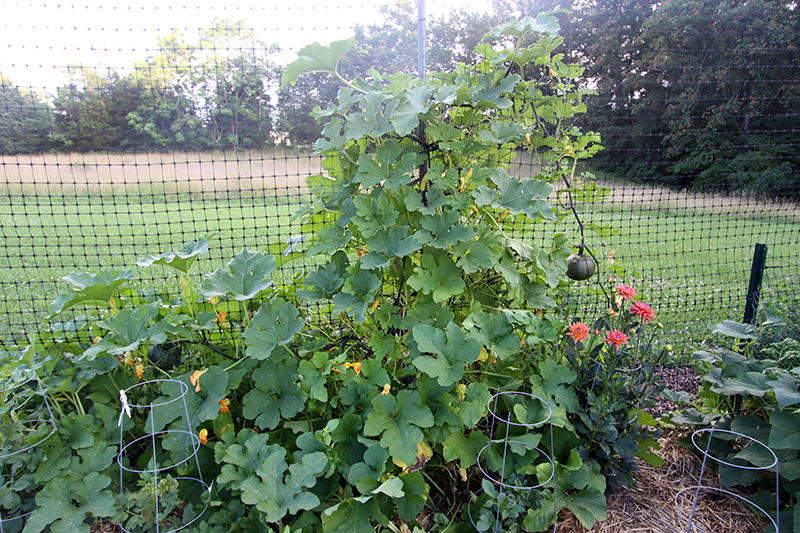
I am drowning in cucumbers. Which is kind of fun as I am on a quest to find the best refrigerator pickle recipe. Any suggestions?
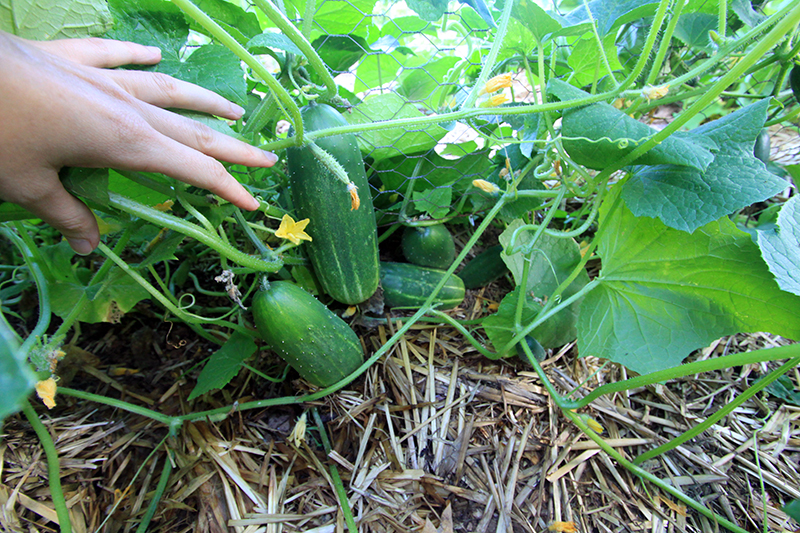
And, because it seems that cucumbers in my garden come on strong before petering out, I started a few more plants up the other former pea trellis. I planted some fun ones I haven’t grown before including an Armenian, lemon, and just another regular old bush cucumber for backup.
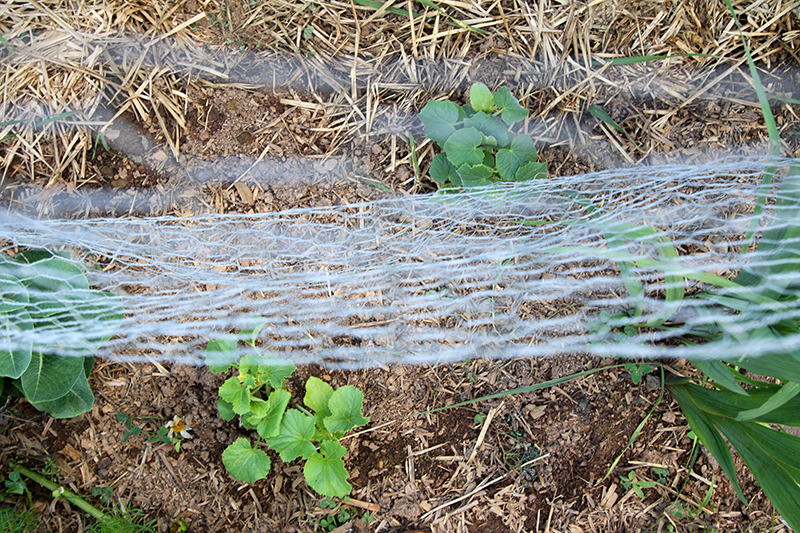
The only sweet peas to bloom from the dozens of started seeds. I think the trick to sweet peas is to plant them in the fall. Pretty pathetic. I will try that this year, as this is one flower I’d like to master.
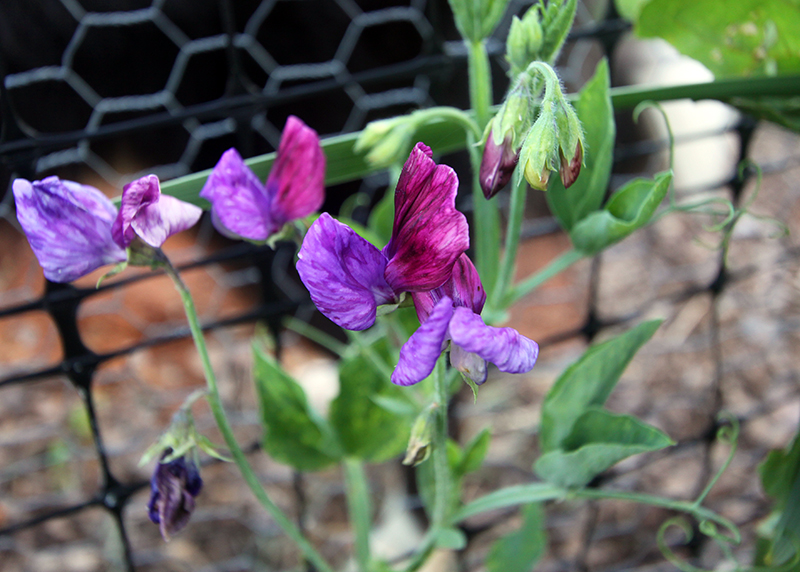
The Japanese beetles have arrived. They aren’t too bad yet, but maybe that’s because everyone I see gets a quick thumbnail through the thorax just before its tossed to a mob of chickens.

Up next, part two of the early July vegetable garden tour…
June 14th, 2013 §
The garden tour continues with a pepper patch, in the foreground below, some dahlias, and giant volunteer pumpkin. I couldn’t figure out where all the pumpkins were coming from, as I’ve never successfully grown any in my garden. And then I remembered that all last winter I split my Halloween pumpkins open and fed them to the chickens as they were penned in the garden. A ha!
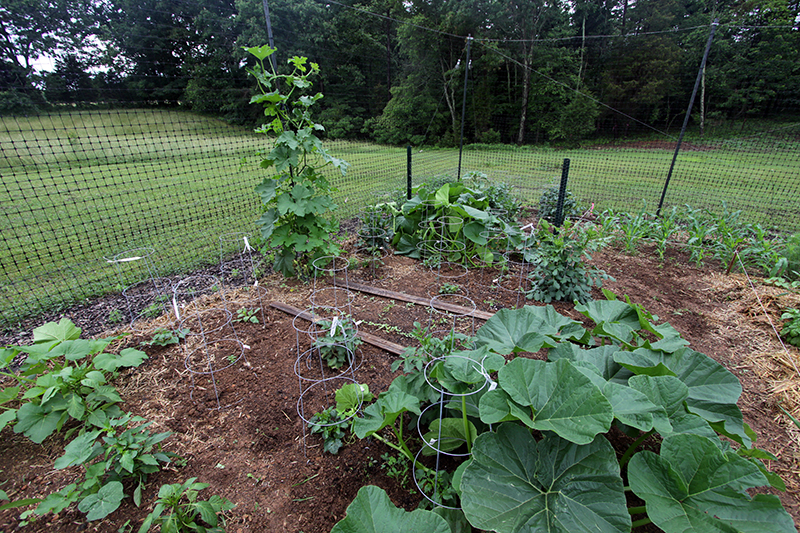
It was a tough call, but I just ripped out all the volunteer pumpkins. I’d love to grow them, but I just don’t have the space. It’s only June and the vines were already overtaking the garden, shading plants I actually am trying to cultivate (like the dahlias). So out they came.
You can also see my squash experiment, above, growing up a post. Ever since I’ve had this garden I’ve battled squash bugs, which have always killed my vines about the time they set their first fruit. This year I said no more squash—too much a waste of resources and space for something that’s bound to die and also cheap to buy in the grocery. Then I came across something that suggested growing squash vertically, as the squash bugs multiply more rapidly when hiding under leaves near the ground. So I used these volunteer squash plants as guinea pigs, tying them up the posts with strips of plastic bag and trimming off the leaves closest to the ground. Despite seeing (and killing) just a handful of squash bugs, the vine below has already succumbed to something. Le sigh. The vegetable that most people can’t give away fast enough eludes me. I think I will do a post-mortem and cut open the stem looking for squash vine borers.
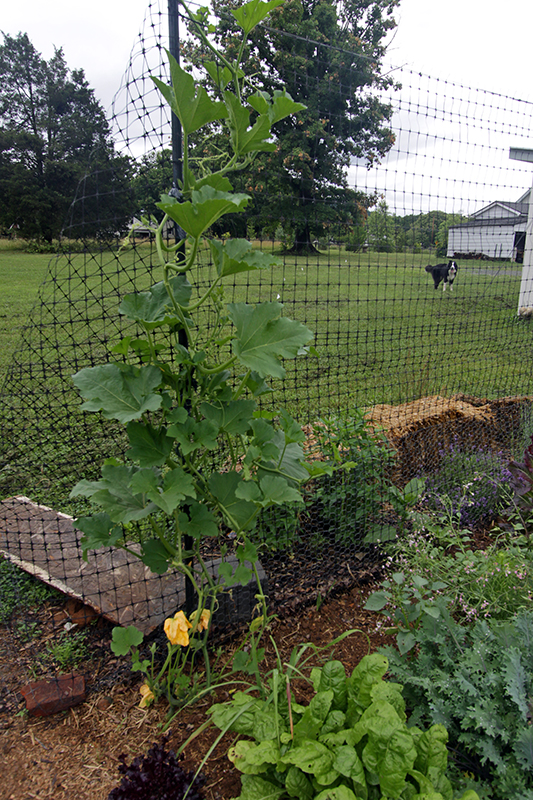
My little “Glass Gem” corn patch is doing well. The stalks have about doubled in the days since taking this photo. The several inches of rain we’ve had in the last week are working wonders in the gardens. More caged dahlias, too, just budding out. The trick of starting them in pots in April has really worked—they are many weeks ahead of where they were last year when started in the ground.
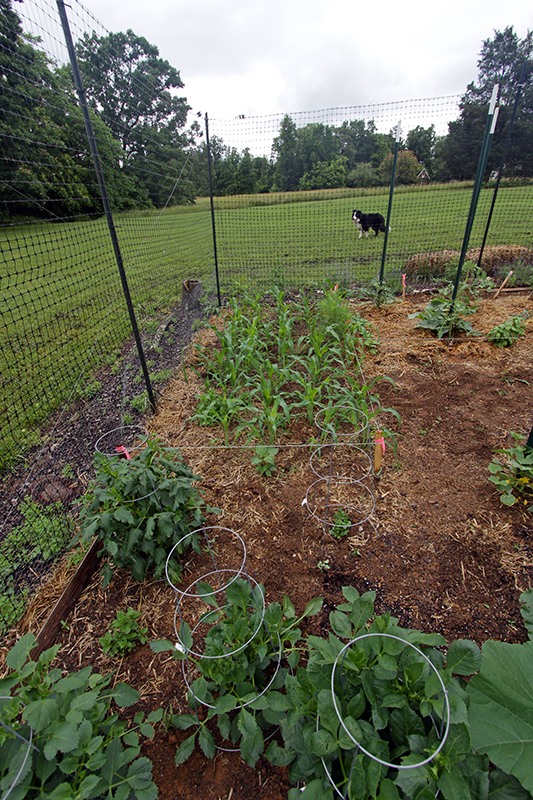
One of my new favorite plants, borage, below. I don’t know why, but I am so drawn to this plant that it’s kind of nuts. It has wide, fuzzy leaves that taste just like cucumber.
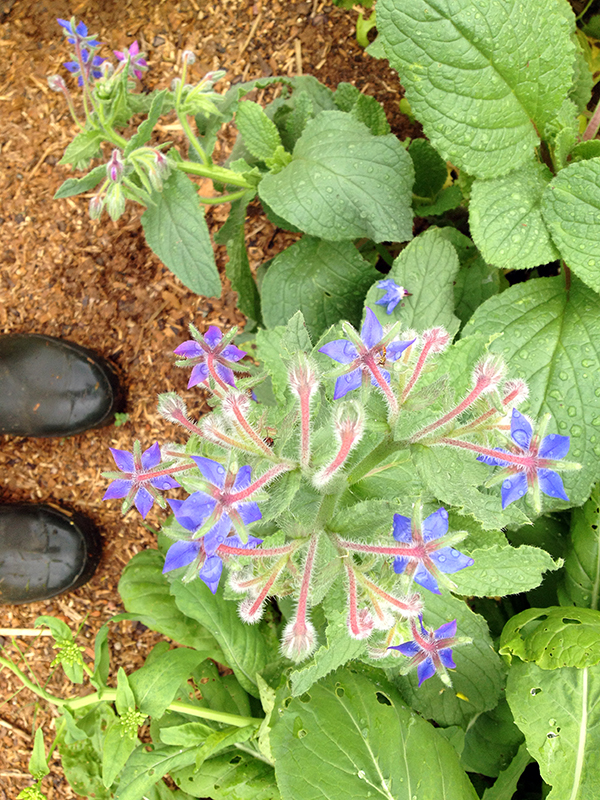
That was exciting enough for me, but then I planted it out and it pulled this trick—blooming with one of the most lovely flowers I’ve seen. There’s something magical about this plant for me. I am just waiting to learn from it.
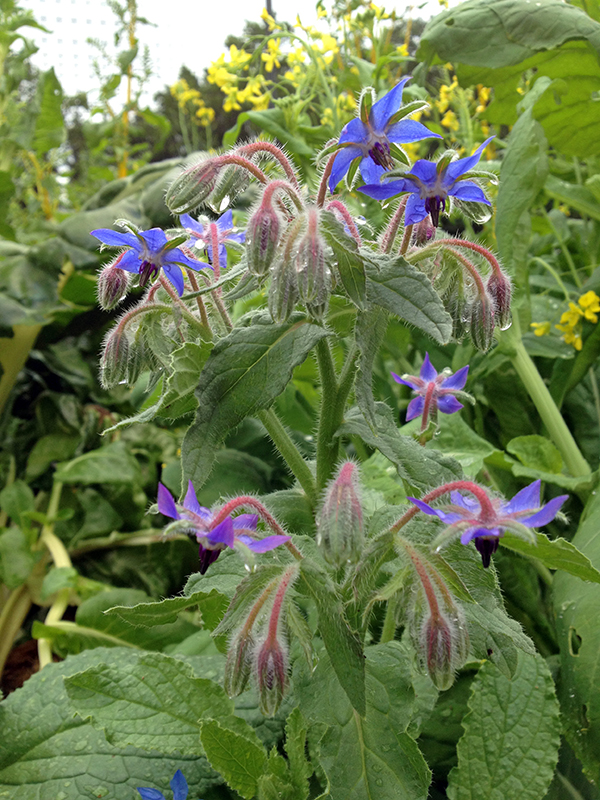
A better shot of my new dahlia cages. They seem to be working extremely well—we’ll see how they do when the plants get five feet tall!
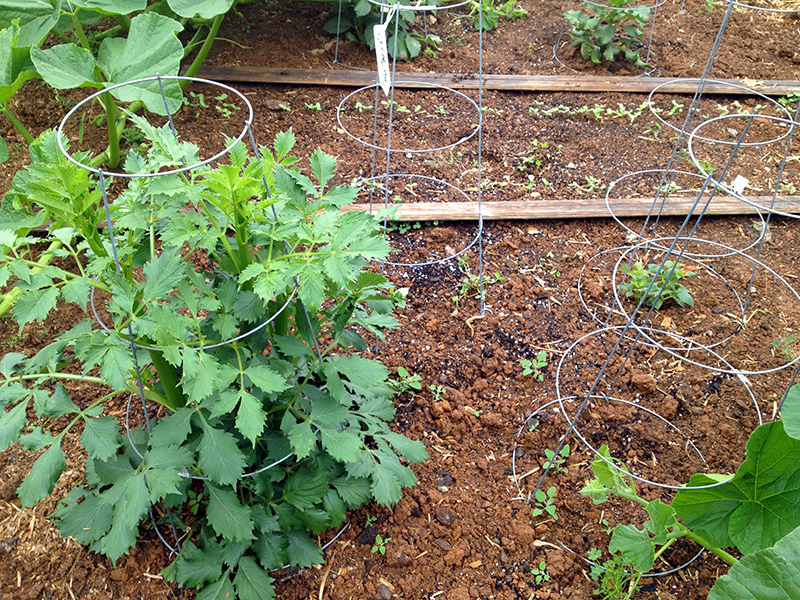
Since taking these photos, I ripped out the old spinach, took out the volunteer pumpkins, weeded, and mulched the entire garden with rotted straw. All the recent rain at the start of the growing season, and more on the way, helps put us in good shape heading in to summer. Up next, a tomato-only tour.

































